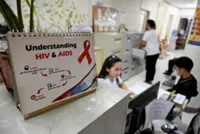MANILA (The Straits Times/Asia News Network): Metro Manila residents are now at risk of inhaling microplastics, or tiny plastic fragments in the environment, according to a new study by Filipino scientists who warn of the insidiousness of this new “major pollutant of our generation.”
This was the first time researchers established the presence of microplastics in the ambient air in the Philippines, one of the world’s largest plastic polluters, environmental scientists Rodolfo Romarate and Hernando Bacosa of the Mindanao State University-Iligan Institute of Technology said.
Already a subscriber? Log in
Save 30% OFF The Star Digital Access
Cancel anytime. Ad-free. Unlimited access with perks.





